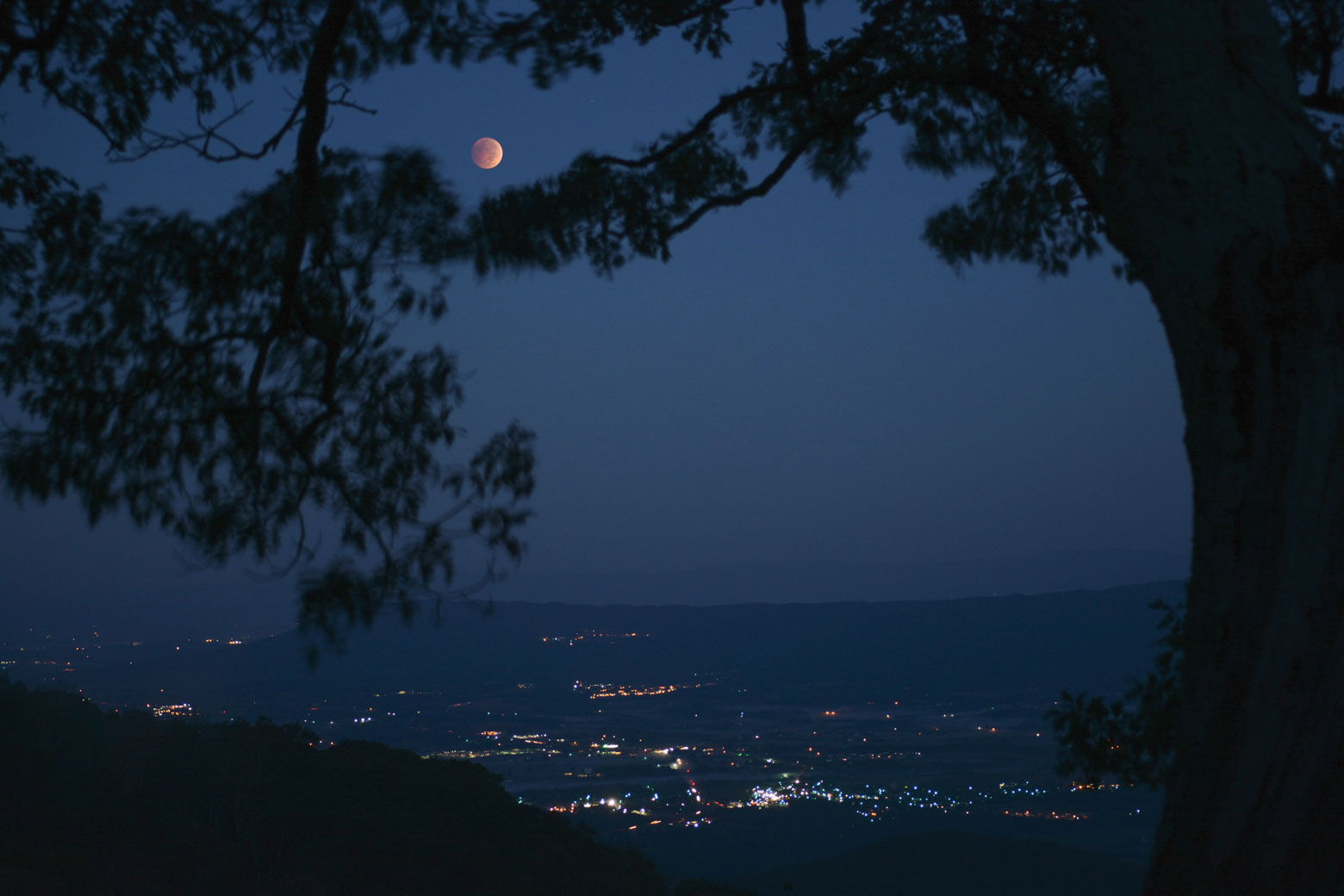
On Tuesday, half of the planet, including the DMV, will be treated to a total lunar eclipse of the Full Beaver Moon. And according to EarthSky.org, this will be the first Election Day total lunar eclipse in U.S. history — and it won’t happen again until Nov. 8, 2394.
It is also the last total lunar eclipse until 2025, so you want to make an effort to see this one!
The good news is, the weather should be mostly clear in the DMV during the eclipse. The bad news is that in the D.C. area, the moon will be deepest in the Earth’s shadow just before sunrise, which means brightening skies – also, the totally eclipsed moon will be very low in the sky as it sets in the west.
Edward Murphy, a professor of astronomy at the University of Virginia, said in an email that the partial phases will begin at 4:09 a.m., when the moon enters the darkest part of the Earth’s shadow, called the umbra.
“At this time, the full moon will be low in the western sky and easy to see, weather permitting,” he said. “The moon will gradually disappear as it slides into the umbra over the next 66 minutes.”
At 5:17 a.m., the moon will be completely inside the Earth’s umbra, and will look deep red or coppery, “because the light illuminating the moon is the light from all of the world’s sunrises and sunsets,” Murphy said.
At around 6 a.m., the moon will be at its faintest and reddest, Murphy said, but then the skies will brighten and the moon will be low.
“Totality ends at 6:42 a.m., and the moon sets and the sun rises just a few minutes later!” he said.
I have seen lunar eclipses under these conditions before, and it is difficult to see totality as the sky brightens. The best locations to see it are places where the western horizon is clear of trees and buildings. The west- and northwest-facing turnouts of Shenandoah National Park would be excellent. They provide a decent horizon and elevation for a good view of the setting/partially eclipsed moon. Be sure to check the park’s website for any updates first.
Binoculars will help immensely and are highly recommended — mandatory, really — to try to see totality as the sky brightens.
You may see references to this total lunar eclipse as a “Blood Moon.” It is a phrase used to describe the reddish color the moon takes on, caused by sunlight passing through the Earth’s atmosphere and falling on the surface of the moon. Because our planet is totally blocking out the light of the sun, this reddish color — just like we can see at sunrise/sunset here on Earth — is the only light reaching the moon. The DMV will see some of that phase.
Sky and Telescope said if it’s cloudy, Italian astronomer Gianluca Masi will livestream the eclipse on his Virtual Telescope site starting at 4:30 a.m. EST. You can also watch streams from Griffith Observatory (from 3 to 9 a.m. EST), High Point Scientific (starting at 4 a.m. EST) and Kopernik Observatory (starting at 2:30 a.m. EST).
Nikon USA has tips for readers trying to take a picture of the event.
While watching the eclipse, you may notice a small grouping of stars to the upper left of the moon and a bright orangish “star.” That’s the Pleiades star cluster and the planet Mars, both in the constellation of Taurus the Bull. Don’t confuse Mars with the bright, similarly colored star Aldebaran, which is the “angry eye of the Bull.”
Oh, and please vote if you haven’t already.
Follow my daily blog to keep up with the latest news in astronomy and space exploration. You can email me at skyguyinva@gmail.com.







